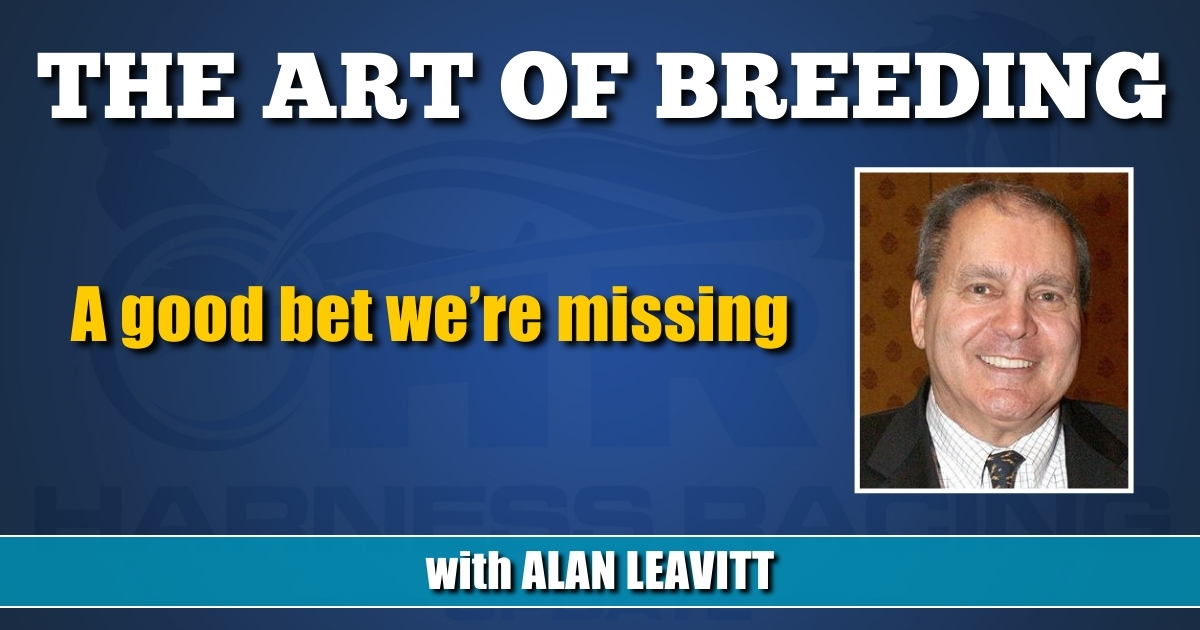
A good bet we’re missing
by Alan Leavitt
Just as there’s a big, untapped market for 2-year-olds in training, there’s also a great betting race that is being completely overlooked in North America. That’s racing under-saddle, or monté racing as it’s known in France, the home of trotting races under saddle.
In France, monté (mounted, in French) races are carded on most racing programs, and their handle is frequently higher than on the races-to-bike. They go for big purses, too. The highest purse for a monté race in 2020 was approximately $850,000 U.S. As the French write many races at distances longer than a mile, their monté races at longer distances, say a mile and 5/8’s, will have a field of as many as 20 horses, or even more. As every racetrack executive knows, the bigger the field, the higher the handle.
Under saddle racing is not entirely unknown in the U. S. through the efforts of a few Francophiles, who promoted monté races at The Meadowlands and The Red Mile a few years ago. This kid was involved in those efforts, and helped raise the money for the purses. Those races were non-betting, but they were wildly popular with both the horsemen and the fans, to the extent that any fans still exist.
For starters, if you stick to the mile distance as in all our other races, the number of starters with all their noses on the gate goes up from a max of 10 to 12 under saddle. This is obviously because horses under saddle take up much less space than when they’re hitched to a bike. And the bigger the field, the better from the bettor’s standpoint.
There’s also more action in the race, again because being two or even three out doesn’t cost the same amount of ground as when you have to take into account the width of the bike, not simply the much smaller width of the horse itself.
The groundwork for monté racing has already been partially laid. The USTA has on record the equipment list for both the horse and rider. The individual mainly responsible for this is Ms. Helene Gregory, and she has also been my muse on this subject.
Gregory not only knows the subject inside and out, she herself is a great rider. In giving the USTA the horse’s equipment list, she included, with emphasis, an overcheck bit. That isn’t something the French insist on, because they mostly don’t use a starting gate, but we do. Helene pointed out that without an overcheck, a horse could duck under the gate, where he’d get as far as he could before the rider hit the gate. Easy peasey once someone smart points it out to you.
Strangely enough, even though monté racing is not part of our racing scene, an event here at The Red Mile had an effect on these races world-wide. That was the afternoon that Moni Maker was retired in a ceremony at The Red Mile. Through the kind offices of Ellen Harvey, another unsung hero of our sport, the great jockey Julie Krone rode Moni Maker with her stirrups up short, the way every jockey rides every thoroughbred here in North America. Until then, the European riders rode with fairly long stirrups, almost the way every saddle horse rider, including this kid during the Ming Dynasty, rides a three or five gaited show horse. That one mile by Julie Krone and Moni Maker showed the world that you wanted a short stirrup for maximum speed, and so stirrup leathers all over Europe were promptly shortened four or five holes.
As another fine point Gregory enlightened me on, the rider should resist the urge to post to the trot, as every riding instructor has instructed every riding student ever since the days of the Greeks and the Romans. Instead, a race rider should stand in the stirrups, not posting, which will save two or three seconds over a mile race. With Gregory, every second counts, as it should if you want to be a winner, which she is.
Another important aspect of monté racing is the necessity of a scale weight if it ever becomes a betting race. That has already been set within the USTA rules, at 140 lbs. At that level the majority of the riders would be women, so they’d be carrying the same kind of weights that thoroughbred jockeys carry. This appeal to women and girls would be a Godsend to all of them who are natural horse lovers, and it would broaden by half the appeal of our sport to the American public, which would surely be a kind of bonanza.
There are a number of obstacles to making monté racing a viable part of our betting program, but the reward would be well worth the effort. There’s no point in itemizing them here; there are plenty of knockers who will be glad to do it for me. But those obstacles could be overcome if we set our minds and hearts to it. If our civilization can send a helicopter to Mars, we can surely make monté racing a part of the sport we all love.












